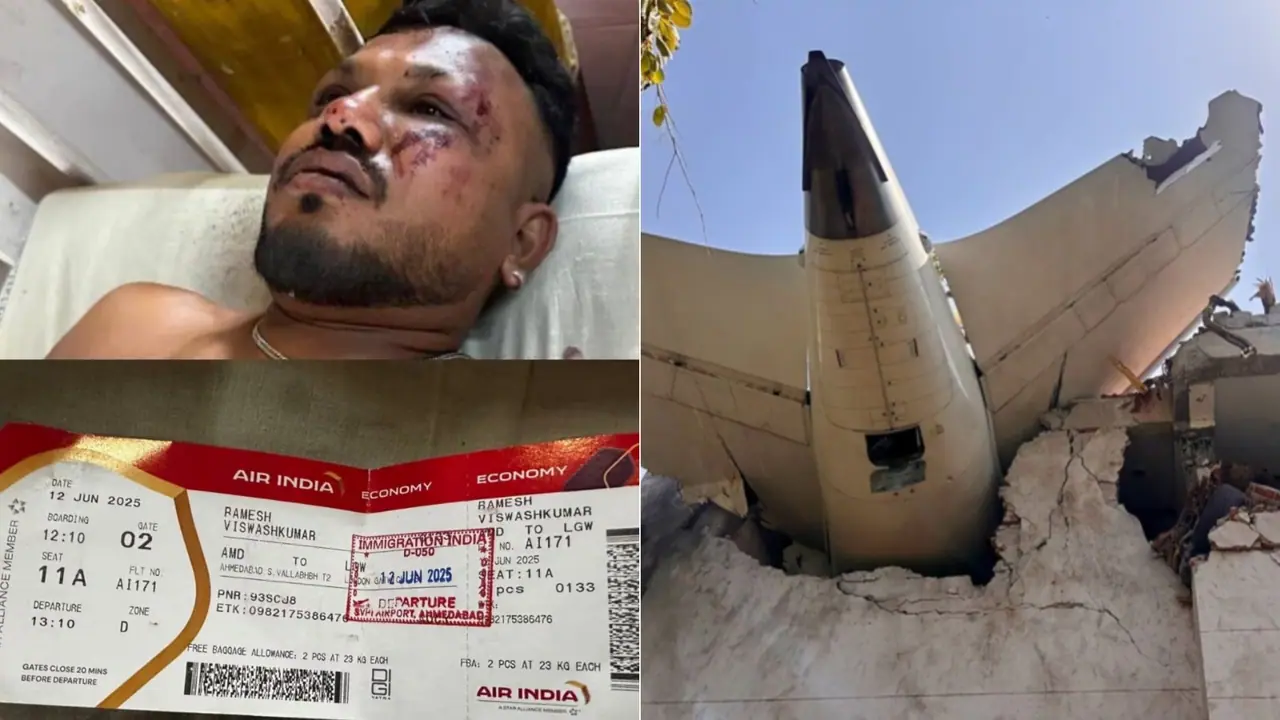Aviation experts have dismissed viral claims that the sole survivor of the Ahmedabad-London Air India crash jumped out mid-air, calling it impossible. Survivor Ramesh Viswashkumar recalls horror moments after the fatal crash.
New Delhi: Amid social media reports that the sole survivor of the London-bound Air India plane crash jumped off from the emergency exit door while the plane was taking off from Sardar Vallabh Patel airport in Ahmedabad, the aviation experts termed it as an “impossible act”.

A total of 241 passengers lost their lives in Air India plane crash on Thursday afternoon after the aircraft hit a medical college hostel in the city of Ahmedabad.
The lone survivor, Ramesh Viswashkumar, 40-year-old, was travelling to the United Kingdom with his brother. He is an Indian-origin British national.
Experts on 'exit door theory'
Asianet Newsable English spoke to a number of aviation experts to understand whether it is possible to open an emergency door while the aircraft is in the air.
A former Indian Air Force fighter pilot, who wished not to be named, said: “It is impossible that anyone could open the emergency door while the plane is in the air.”
Stating that it was the worst aviation disaster in a decade, Atul Singh, aviation safety expert, told Asianet Newsable that Ramesh Viswashkumar could survive because of his sitting location. He got a chance to jump off from a ruptured aircraft fuselage.”
The ruptured aircraft fuselage refers to a situation where the middle part of a plane, containing passengers and cargo, experiences a structural failure, often causing a tear or break in the skin or frame. It can lead to explosive decompression.
Rubbishing the theory which is viral on social media about Ramesh Viswashkumar’s alleged involvement in the plane crash, Atul Singh said that “we should wait for a day or two. Everything will come out as the black box has been recovered. We will get to know what exactly happened after taking off the plane.”
Causes behind aviation accidents
Talking about the aviation accidents, he said there are three ways in which a plane can be crashed – human error, serious technical malfunctioning, including hydraulic failure, engine failure and bird strike.
Stating that it would be the rarest of rare incidents if the both engines failed when the plane was taking off, Atul Singh said: “In aircraft aerodynamics, we analyze the forces of lift, weight, thrust, and drag that act on an aircraft in flight. In this case you can see the plane was taking height and then you can observe it was sinking politely and not nose-diving.”
Ramesh Viswashkumar can be seen saying: “Thirty seconds after take-off, there was a loud noise and then the plane crashed.”
“When I got up, there were bodies all around me. I was scared. I stood up and ran. There were pieces of the plane all around me,” he said.
“Someone grabbed hold of me and put me in an ambulance and brought me to the hospital.”
He said that his brother, Ajay, was seated in a different row on the plane. "He was travelling with me and I can't find him anymore. Please help me find him," he said.


